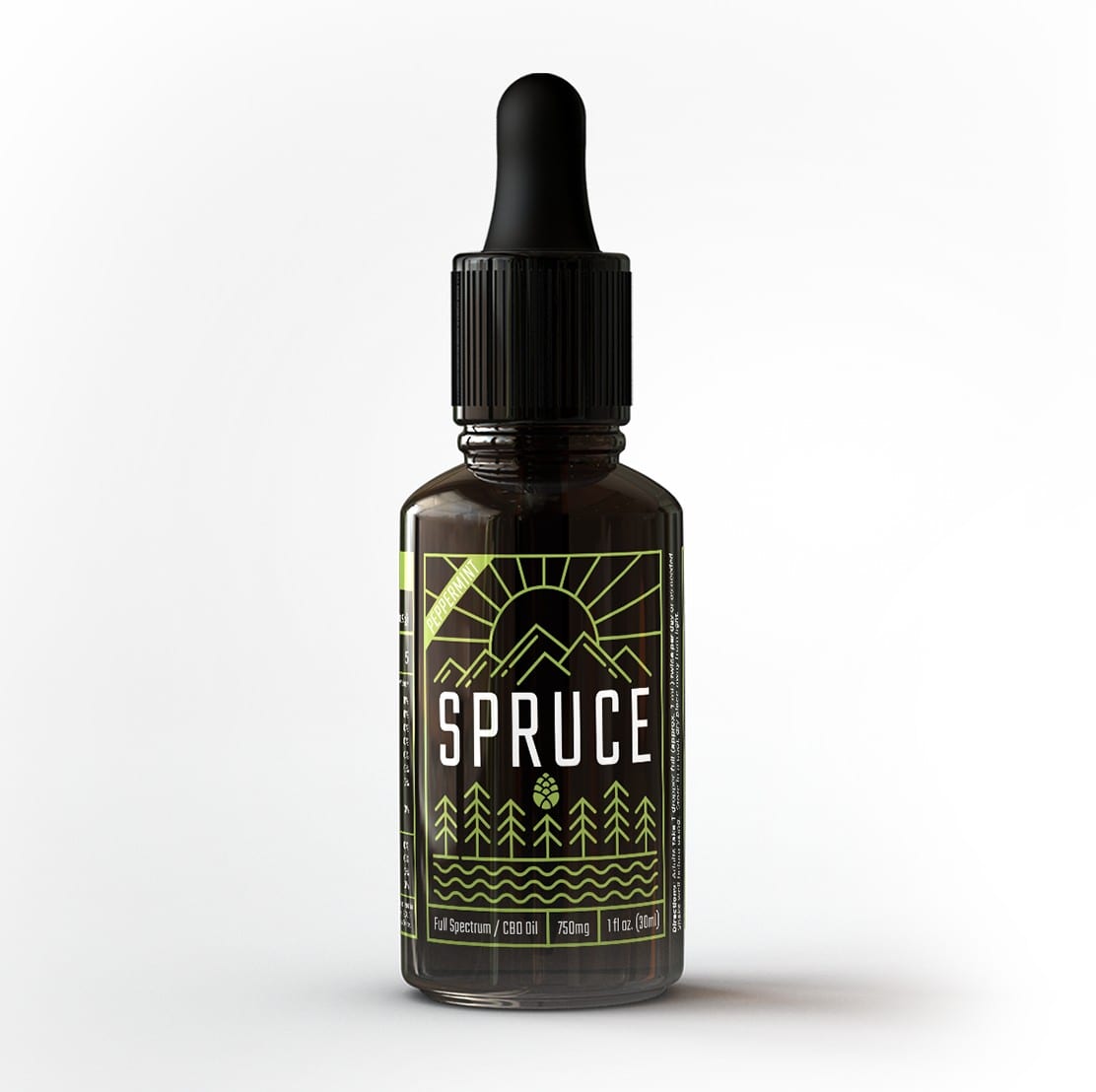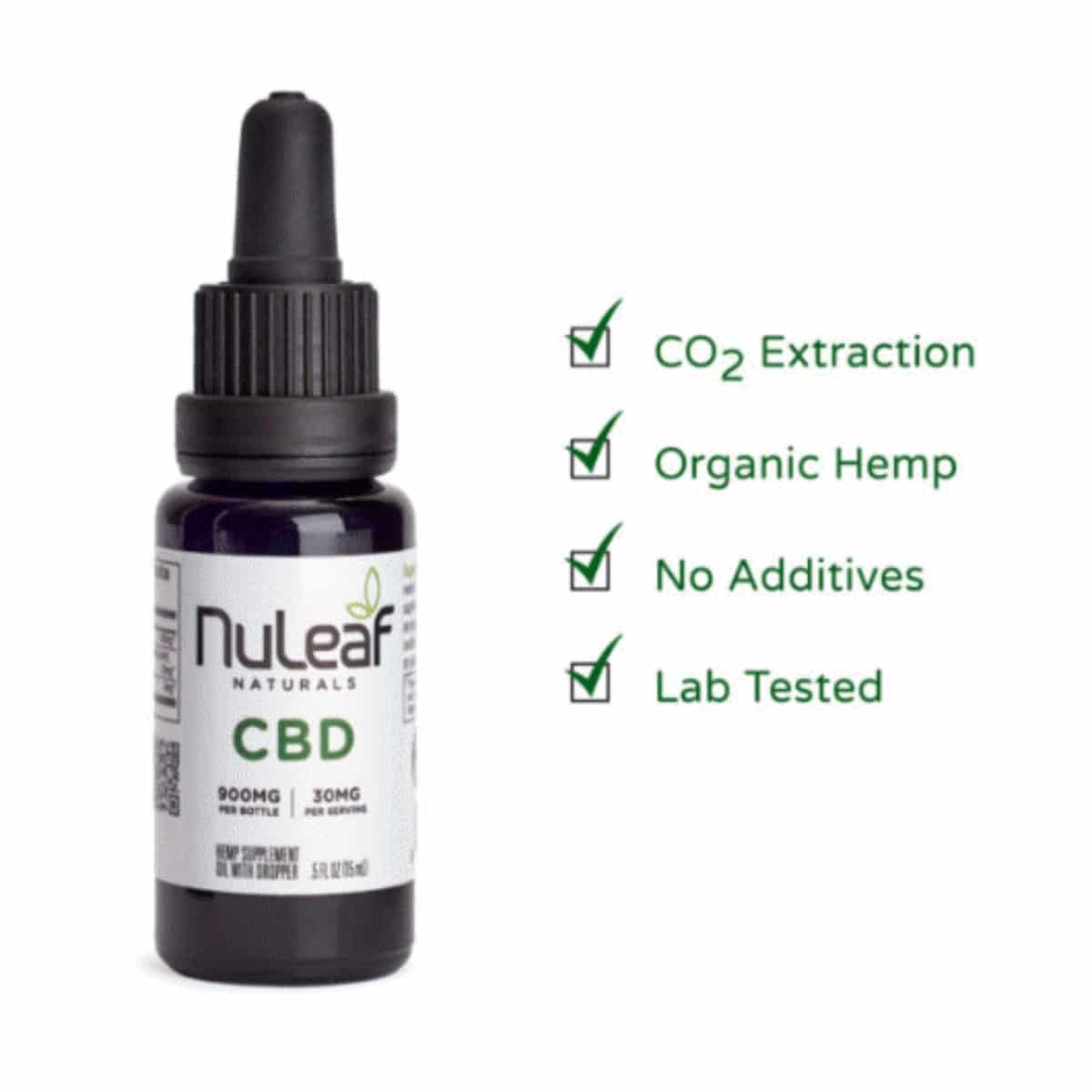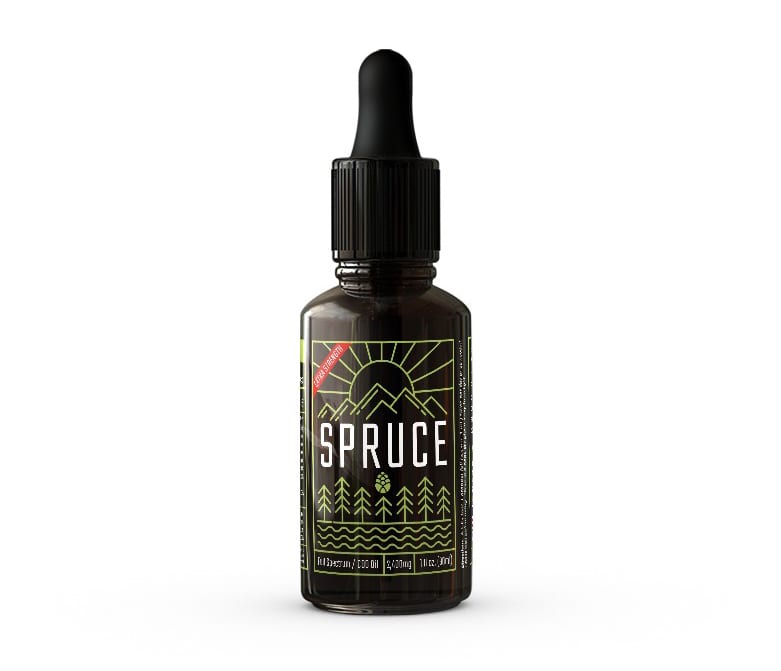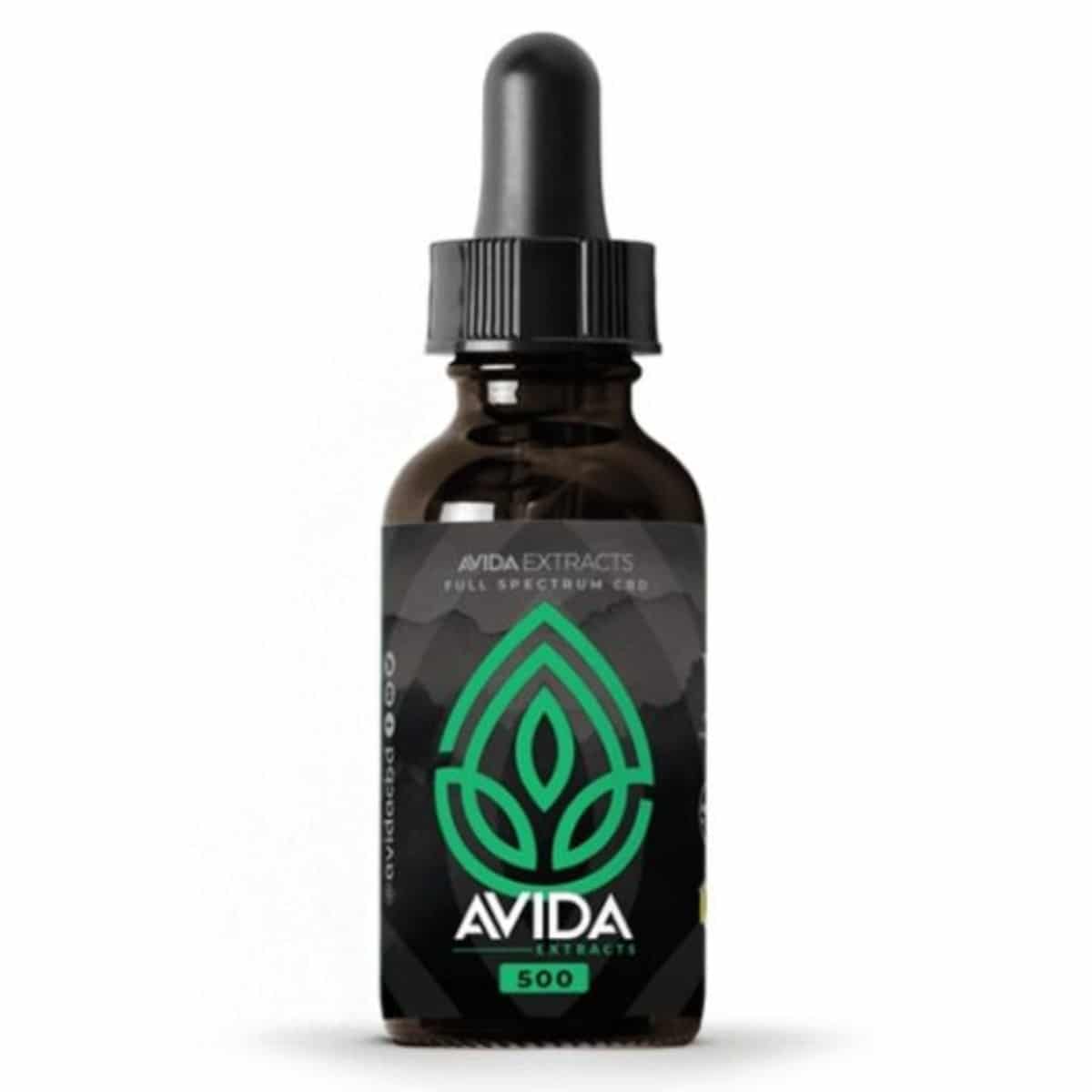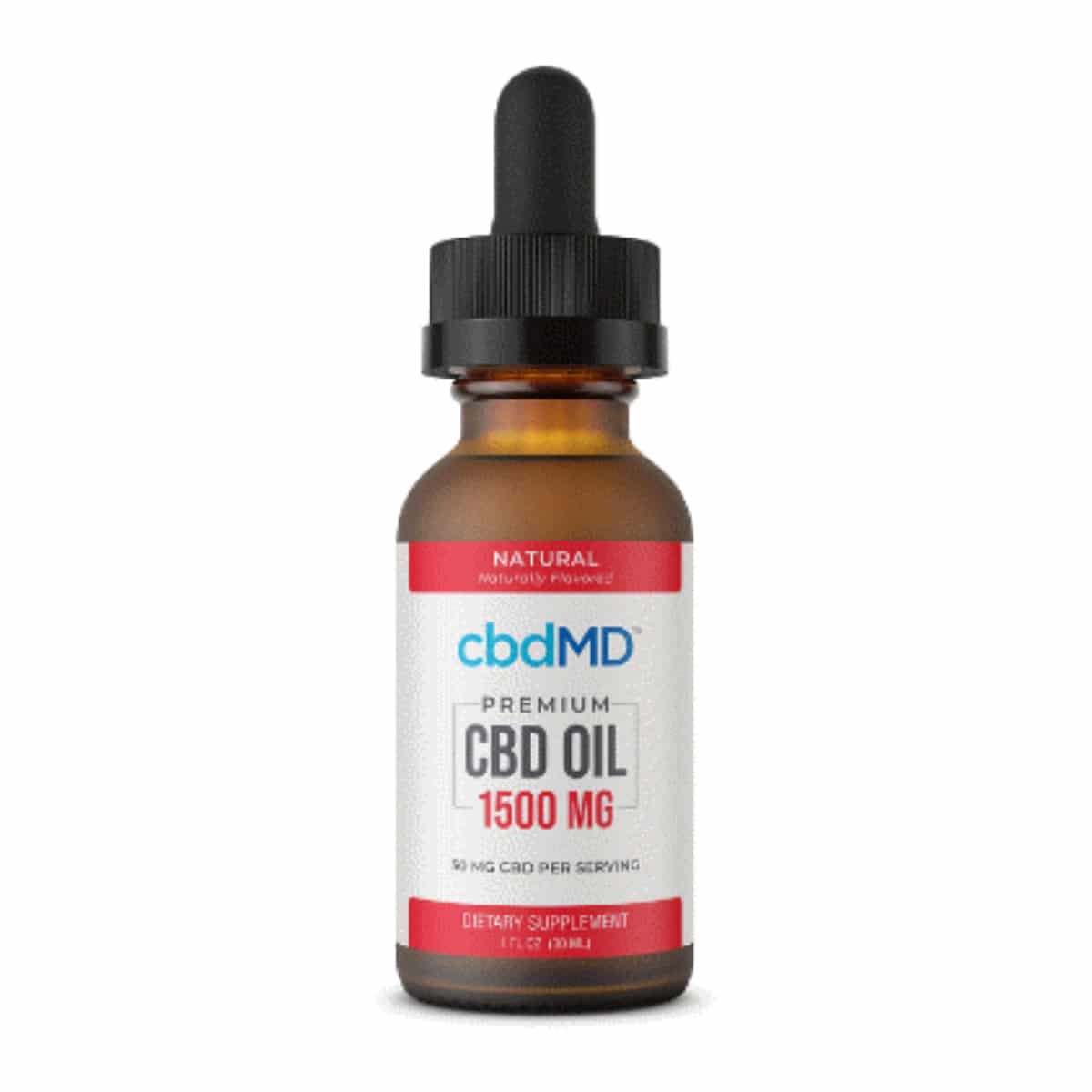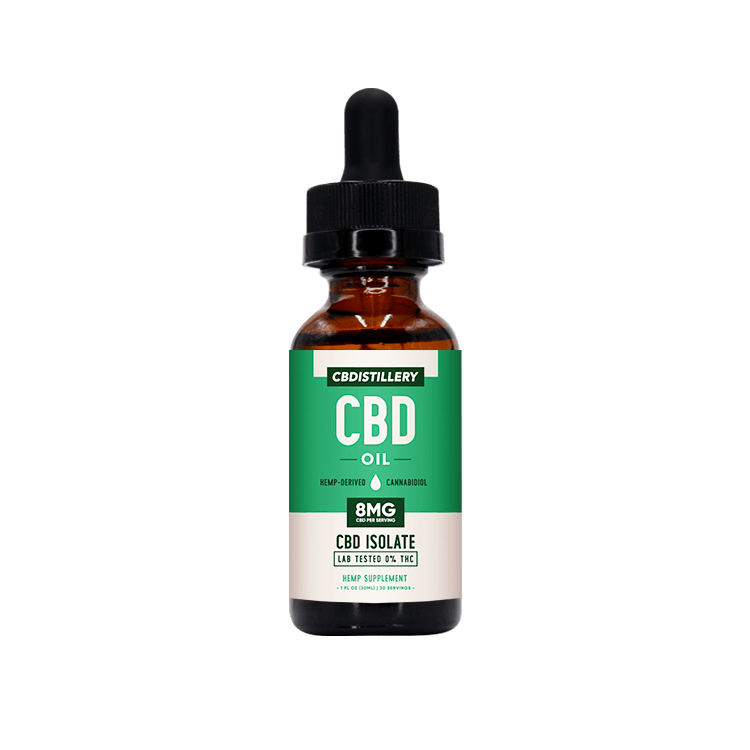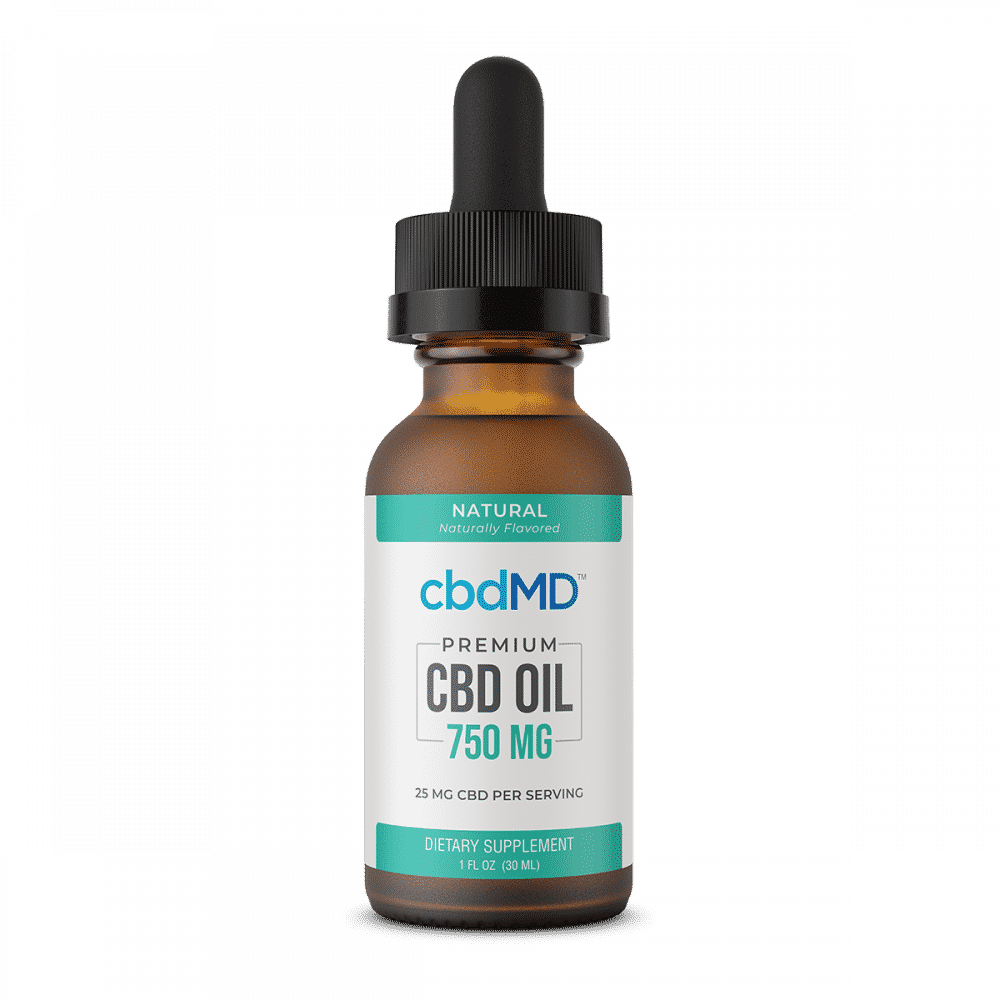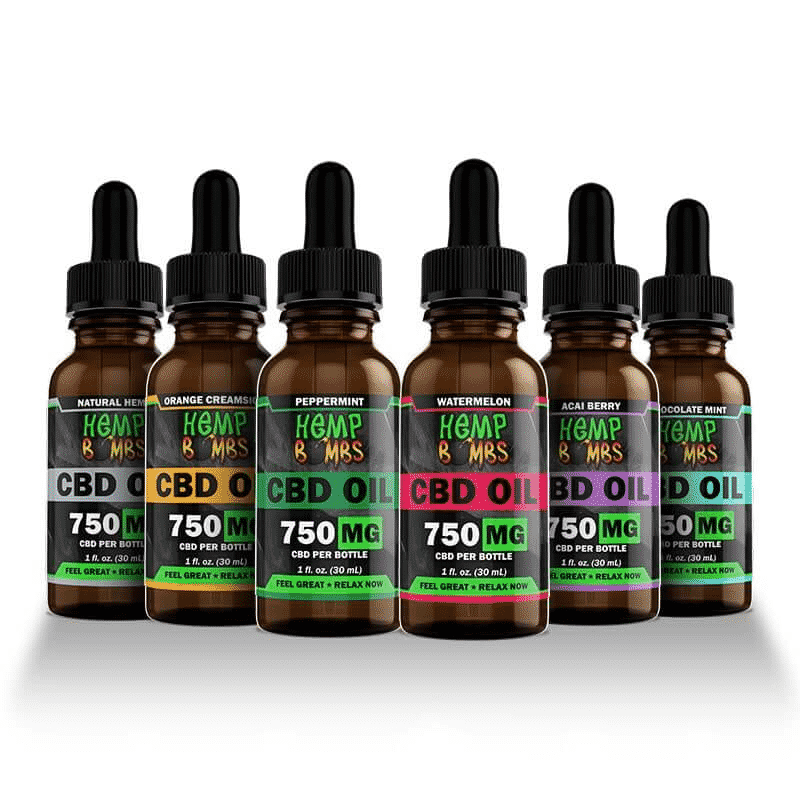Best CBD Oil for Nausea
Looking for the best CBD oil for nausea but cannot decide which one to purchase? Check out the following list of reliable CBD products for nausea and see which one is most suited to your needs and lifestyle.
Best CBD Oil for Nausea 2025
- Spruce 750mg Lab Grade CBD Oil Editor's Pick
- NuLeaf Naturals 900mg Full Spectrum Hemp CBD Oil Best Organic
- Spruce 2400mg Lab Grade CBD Oil Editor's Pick
- Avida Full Spectrum CBD Oil Tincture 500mg Best Seller
- cbdMD CBD Oil Tincture Natural 1500mg Best Natural Alternative
- CBDistillery THC Free CBD Oil Tinctures Best THC-Free
- cbdMD CBD Oil Tincture Natural 750mg Best Customer Rated
- NuLeaf Naturals 300mg Full Spectrum Hemp CBD Oil Best Starter
- Hemp Bombs 750mg CBD Oil Best Flavor Range
Compare the Best CBD Oil for Nausea in 2022
Best CBD Oil for Nausea
1. Spruce 750mg Lab Grade CBD Oil
cbdc overall score
4.8
CBDC Evaluation Table/Score
| Pros | Cons |
|---|---|
|
Mid-strength |
No other flavors |
|
Natural peppermint flavor |
|
|
Made from 100% organic and natural ingredients |
Overview
Each bottle of the 750mg CBD oil tincture contains 25mg of CBD per dropper full. The oil is peppermint flavor to mask any unpleasant tastes related to CBD.
2. NuLeaf Naturals 900mg Full Spectrum Hemp CBD Oil
cbdc overall score
5.0
CBDC Evaluation Table/Score
| Pros | Cons |
|---|---|
|
Pure CBD hemp |
No other flavors |
|
All natural |
|
|
Approximately 300 drops total |
Overview
Natural remedy for various illnesses. NuLeaf Naturals’ CBD oil is a whole-plant extract containing a full spectrum of naturally occurring synergistic cannabinoids and terpenes.
3. Spruce 2400mg Lab Grade CBD Oil
cbdc overall score
5.0
CBDC Evaluation Table/Score
| Pros | Cons |
|---|---|
|
Extra Strength |
Tastes bitter |
|
No artificial flavoring or colors |
No THC-free option |
|
Made from 100% organic and natural ingredients |
Overview
The largest bottle of CBD oil that Spruce offers contains 2,400mg of CBD. This is full-spectrum CBD oil, which is the maximum possible potency. Each high potency dropper full contains 80mg of CBD. There are no flavorings in it, which allows for the most CBD to fit in the 30ml bottle.
4. Avida Full Spectrum CBD Oil Tincture 500mg
cbdc overall score
4.6
CBDC Evaluation Table/Score
| Pros | Cons |
|---|---|
|
Light Spearmint flavor |
No other flavor |
|
Non-THC, Non-detected in drug test |
Overview
Avida Extracts Full Spectrum CBD oil is the latest iteration of the brand’s advanced Avida CORE Spectrum technology. They use a proprietary full spectrum blend, resulting in the highest naturally occurring Phyto-cannabinoids and Terpenes with THC (<0.3) to support your health.
5. cbdMD CBD Oil Tincture Natural 1500mg
cbdc overall score
4.7
CBDC Evaluation Table/Score
| Pros | Cons |
|---|---|
|
Various delicious flavors to choose from |
cbdMD uses MCT as its carrier oil so individuals who are allergic with coconuts should consider other brand options |
|
Has vegan, organic, and gluten-free ingredients |
|
|
Free shipping for this particular product within USA |
|
|
World-class customer service team |
Overview
cbdMD’s CBD oil tinctures are made using only CBD sourced from medical hemp and MCT oil as a carrier oil. Tinctures are offered in orange, mint, natural, and berry flavors. Safe for daily use, the oil tinctures are packaged with a built-in rubber dropper to adjust CBD dosage easily. The packaging is made to be easy to transport and discreet to use.
6. CBDistillery THC Free CBD Oil Tinctures
cbdc overall score
4.4
CBDC Evaluation Table/Score
| Pros | Cons |
|---|---|
|
60-Day Satisfaction Guarantee |
Dropper is a bit shaky |
|
Various strengths |
|
|
Oil extracted from aerial plant parts of US grown industrial hemp |
|
|
Sourced from non-GMO industrial hemp grown in the USA through natural farming practices |
Overview
CBDistillery’s Isolate CBD Oil Tinctures harness the power of pure CBD. CBD Isolate Oil Tinctures include 0.0% THC. When you use CBDistillery CBD Isolate Oil Tinctures, you can be assured you’re using the highest quality CBD on the market.
7. NuLeaf Naturals 300mg Full Spectrum Hemp CBD Oil
cbdc overall score
4.6
CBDC Evaluation Table/Score
| Pros | Cons |
|---|---|
|
Pure CBD hemp |
No other flavors |
|
All natural |
A bit pricey compared to competitors |
|
Approximately 100 drops total |
Overview
This is one of several concentrations from NuLeaf Naturals. As the lowest concentration, it is the company’s best option for those new to CBD oil. The product is lab-tested and fully organic. It is full-spectrum, so it contains THC in small quantities.
8. cbdMD CBD Oil Tincture Natural 750mg
cbdc overall score
4.4
CBDC Evaluation Table/Score
| Pros | Cons |
|---|---|
|
Vegan and Gluten free |
Does not ship internationally |
|
Has a third-party lab test |
|
|
Wide variety of CBD strengths and sizes |
Overview
A 750mg bottle of cbdMD’s Broad Spectrum Oil Tincture does not contain THC. It also has a fairly wide flavor range which is perfect for those who prefer other taste. Vegan consumers are considered since cbdMD offers Vegan products. Aside from all of that, another reason why people love cbdMD is because it’s free from harmful chemicals.
9. Hemp Bombs 750mg CBD Oil
cbdc overall score
3.9
CBDC Evaluation Table/Score
| Pros | Cons |
|---|---|
|
Wide variety of flavors |
Incomplete information about the product |
|
Lab test results are complete |
Does not ship to all international countries |
|
30-day money-back guarantee |
Overview
Hemp Bombs offer CBD Oil Tinctures that come in a 30ml bottle containing 750mg of CBD. They provide a wide range of flavors perfect for those that have a knack for sweets. Consumers can safely intake this because it’s free of chemicals and pesticides. Hemp Bombs also offer a 20% off on products upon subscription.
Benefits of CBD for Nausea
Nausea is a protective defense mechanism of the human body. Common causes of nausea include migraine attacks, appendicitis, gastroenteritis, motion sickness, food poisoning, dizziness, morning sickness, chemotherapy, and brain tumor(1).
While different antiemetic drugs may help reduce nausea, many of them cause adverse effects(2).
Common side effects include headache, dizziness, drowsiness, constipation, vision changes, and sedation. Antiemetic medicine may also cause vertigo, low blood pressure, and dysphoria.
The most serious and worrisome side effect of antiemetic drugs is QT prolongation. QT prolongation means that the heart muscle recharges longer between beats.
QT prolongation has been associated with an increased risk of life‐threatening ventricular arrhythmia and sudden cardiac death(3).
Thus, more people become interested in natural and safe alternatives for nausea, like CBD.
Research has indicated CBD’s potential benefits in treating nausea. A 2002 study published in Neuroreport highlighted CBD as a non-psychoactive compound that may interfere with nausea in rats(4).
Results suggested that CBD and other non-psychoactive compounds may help treat chemotherapy-induced nausea.
A study performed in 2003 examined the effects of cannabinoids in rat models of nausea. Rodents were given cannabinoid agents, like tetrahydrocannabinol (THC) and HU-210, and results revealed that CBD may suppress nausea(5).
Although these studies are conducted on animals, future research may find similar benefits of CBD for nausea in human subjects.
A 2011 study published in the British Journal of Pharmacology showed that CBD may also suppress nausea and vomiting(6). The research noted that CBD may effectively treat nausea and vomiting produced by chemotherapy or other treatments.
A 2017 review on the therapeutic effects of cannabis showed that cannabinoids or naturally occurring compounds may cause anti-nausea effects for adults experiencing chemotherapy-induced nausea and vomiting(7).
The literature did not specifically show CBD’s effectiveness in chemotherapy-induced nausea, nor its potential as an effective treatment for nausea.
However, a review on cannabinoid regulation of acute and anticipatory nausea suggested CBD as a potential anti-nausea agent(8).
Meanwhile, the Food and Drug Administration (FDA) has approved the use of dronabinol and nabilone (synthetic tetrahydrocannabinol) to treat chemotherapy-induced nausea and vomiting(9).
Epidiolex is the first FDA-approved CBD drug to treat seizures associated with Lennox-Gastaut Syndrome and Dravet Syndrome, two rare cases of childhood epilepsy.
There is an increasing demand for non-FDA approved indications. Thus, independent companies have produced different CBD oil products to satisfy the public’s needs.
How CBD Oil Helps With Nausea
CBD, a cannabinoid or naturally occurring compound in cannabis plants, may be beneficial for nausea through its interaction with the endocannabinoid system (ECS).
The ECS maintains homeostasis or balance in biological functions, including mood regulation, pain perception, and immune response(10).
The ECS also has two main types of cannabinoid receptors: CB1 receptors and CB2 receptors. Located on cells throughout the body, these receptors interact with cannabinoids or compounds in the body.
CB1 receptors lie in the brain and central nervous system. They regulate bodily functions, such as memory processing, appetite, pain sensation, mood, and sleep.
CB2 receptors lie in cells within the immune system and its linked structures. Once activated, these receptors stimulate a response that helps fight inflammation.
A study highlighted CBD’s potential anti-inflammatory and analgesic effects by promoting the signaling of the adenosine receptor A2A, which helps suppress immune cells(11). Thus, CBD may relieve nausea and settle an upset stomach and other related symptoms.
Moreover, the human body naturally produces cannabinoids or endocannabinoids, like anandamide. A 2013 study showed that anandamide may regulate toxin-induced nausea and vomiting(12).
However, fatty acid amide hydrolase (FAAH) is responsible for the degradation of anandamide(13). As CBD oil inhibits FAAH, it may slow down anandamide’s decomposition, helping relieve nausea(14).
A 2012 study also emphasized cannabidiol’s potential ability to trigger the ECS to produce more anandamide(15).
Furthermore, a 2011 study showed that CBD may produce anti-nausea effects through the indirect activation of 5-HT1A serotonin receptors(16). The “happy chemical” serotonin plays a crucial role in mood, anxiety levels, appetite, and cognitive functions.
CBDA (the acidic raw form of CBD) is even more active at binding to serotonin receptors and may be a potent antiemetic(17).
Thus, the studies mentioned above suggest that CBD may provide health benefits for chemotherapy-induced nausea and vomiting and other related conditions.
How Soon Can CBD’s Effects Be Felt?
CBD’s potential benefits in nausea may take effect faster or last longer depending on different factors, including the administration method, body weight, metabolism, and CBD potency.
CBD oil tinctures are one of the fastest ways for CBD to get into the body as it is absorbed directly into the bloodstream. Results may be experienced within 30 to 60 minutes.
CBD oil vapes also produce one of the fastest effects of CBD as the compound enters the bloodstream through the lungs. Results may be felt within 20 minutes.
Meanwhile, CBD edibles may take longer to work as CBD has to pass through the digestive system. The effects of CBD edibles, like gummies, may kick in within 30 to 60 minutes(18).
How long CBD’s potential therapeutic benefits for nausea will remain or continue may depend on the form of CBD used.
While CBD tinctures may provide immediate relief, effects may last for four to six hours only.
Meanwhile, CBD edibles’ effects may last for over six hours(19). For CBD vapes, results may last for 30 minutes or an hour or two only.
Other factors, like metabolism, frequency of use, dosage, and product quality, affect how long CBD helps with nausea.
Possible Side effects of Using CBD for Nausea
Despite CBD’s wide range of potential therapeutic benefits, the compound has its corresponding risks or side effects. According to Mayo Clinic, typical side effects include(20):
- Dry mouth
- Diarrhea
- Drowsiness
- Reduced appetite
- Tiredness
- Fatigue
- Changes in weight
CBD may also interact with some medications, such as blood thinners.
According to a 2011 review, CBD may induce side effects, such as the inhibition of hepatic drug metabolism, decreased fertilization capacity, and decreased activities of p-glycoprotein and other drug transporters(21).
CBD Dosage for Nausea
CBD dosage of up to 1,500 mg/day is well tolerated in humans(22).
However, Epidiolex is the only FDA-approved CBD product with a recommended starting dosage of 2.5 mg/kg taken twice a day(23). Other than this, there is no official recommended CBD dosage for nausea.
Moreover, determining the right CBD dosage is challenging, as effects also vary depending on several factors. These include body weight, metabolism, CBD potency, and product quality.
Thus, users are advised to start taking CBD in small doses, around 5mg. Once they experience relief from nausea, they can gradually increase the dosage.
Consumers should also consult a healthcare professional, especially one knowledgeable about cannabis use, to help them determine the right dosage of CBD based on their needs and preferences.
How to Take CBD Oil for Nausea
The increasing popularity of CBD as an alternative treatment for different medical conditions urges companies to produce various CBD oil products.
The most common types of CBD products for nausea include CBD tinctures, CBD capsules, CBD edibles, and CBD vapes. They are available in various CBD retail stores, dispensaries, or online.
CBD Oil Tinctures
CBD tinctures are the most common form of CBD product. Users can easily apply CBD tinctures sublingually or directly under the tongue to facilitate faster absorption of CBD directly into the bloodstream.
Consumers can let the desired quantity of drops stay under the tongue for 60 seconds before swallowing. Depending on the metabolism and other significant factors, results may show within 30 minutes to 60 minutes.
Generally, the effects may also last for four to six hours. One drawback, however, is the earthy taste of CBD oil.
Fortunately, other CBD brands offer CBD tinctures in different flavors. However, users should be cautious of artificial flavors and ingredients added to CBD products.
CBD tinctures may also be used with CBD lotions and creams and applied transdermally for site-specific pain relief.
An animal study showed that CBD topicals may reduce inflammation and arthritis-pain related symptoms without evident side effects(24).
CBD Oil Edibles
CBD edibles, like gummies, are perfect for those who do not want the earthy flavor of CBD. However, unlike CBD oral products, CBD edibles can take a while to work as they need to pass through the digestive tract.
According to a 2016 study, CBD edibles’ effects may be felt within 30 to 60 minutes(25). CBD edibles that contain THC, peak blood levels occur approximately three hours later, and the effects can last over six hours.
CBD Oil Capsules
Another convenient way to take CBD oil is through CBD capsules. However, like CBD gummies, CBD capsules may take longer to work than oral CBD drops as they need to go through the digestive system.
Thus, CBD capsules may not be suitable for those needing immediate relief from nausea.
However, CBD capsules are recommended for those who want a tasteless CBD experience.
CBD Oil Vapes
CBD oil vapes provide the fastest ways to get CBD into the system, as the vapors enter the bloodstream through the lungs without going through the digestive system.
However, effects may last for 30 minutes to an hour or two only. It is also difficult to determine precisely how much CBD is in each draw.
While CBD oil vape products usually indicate the CBD amount per inhale, the amount may vary per individual.
Furthermore, the FDA, Centers for Disease Control and Prevention, and other state and local health departments have conducted investigations regarding a national outbreak of e-cigarette or vaping product use-associated lung injury (EVALI)(26).
As of February 18, 2020, there were 2,807 hospitalized EVALI cases or deaths reported to CDC. Thus, the CDC and FDA do not recommend using vapes.
How to Buy the Best CBD Products for Nausea
Common types of CBD for nausea include CBD tinctures, edibles, capsules, and vapes. However, before consumers buy and use CBD oil products, they should take the following steps:
- Seek medical advice, especially if purchasing CBD products for the first time or taking other medications to ensure proper CBD use.
- Check whether the CBD product uses non-GMO, organic hemp. Also, choose quality products that use CO2 extraction techniques to maximize the benefits of hemp extracts.
- Verify whether the product undergoes third-party lab testing. The certificate of analysis (COA), often available on the brand’s website, must indicate the product’s actual CBD content and absence of pesticides, residual solvents, and other harmful contaminants.
- Compare product label claims and the COA. Third-party testing of high-quality CBD hemp oil products shows accurate or higher CBD content than their product label claims.
- Know the different CBD types: full-spectrum CBD, broad-spectrum CBD, and CBD isolates.
Full-spectrum CBD products have a complete range of cannabinoids or naturally occurring compounds in cannabis plants, including CBD, THC, terpenes, flavonoids, fatty acids, and other minerals.
Terpenes provide cannabis plants’ unique aroma, while flavonoids are responsible for their vivid colors.
These compounds produce the “entourage effect,” which means they provide more benefits when combined than when they are used as isolated elements(27). Thus, full-spectrum CBD oil suits users who want to maximize all compounds’ benefits.
Meanwhile, broad-spectrum CBD also contains all compounds in cannabis plants, except THC. Consumers who do not want to experience the euphoric effects of THC may use broad-spectrum CBD.
However, users may also choose CBD isolates, which are pure CBD extracted in isolation from all other compounds.
Legality of CBD
Cannabis laws continuously change, especially in the United States. Following the 2018 Farm Bill, industrial hemp became legal, which means that hemp-derived CBD products with 0.3% or less THC are no longer considered controlled substances under federal law(28).
Tetrahydrocannabinol is a psychoactive compound that causes a euphoric high among users. Marijuana remains a Schedule 1 controlled drug given its high potential for abuse, attributable to THC’s psychoactive effects(29).
However, the 2018 Farm Bill preserved the FDA’s authority to regulate products containing cannabis or cannabis-derived compounds.
According to the FDA, products with THC or CBD should not be sold legally as dietary supplements. Currently, the FDA approves only one cannabis-derived drug product, Epidiolex (cannabidiol), and three synthetic cannabis-related drug products: Marinol (dronabinol), Syndros (dronabinol), and Cesamet (nabilone)(30).
Epidiolex is a purified form of CBD derived from cannabis, approved to help treat seizures associated with Lennox-Gastaut syndrome and Dravet syndrome, two severe kinds of epilepsy in children.
Meanwhile, Marinol and Syndros are approved to treat anorexia associated with weight loss in patients with acquired immunodeficiency syndrome (AIDS).
Cesamet is used to reduce nausea associated with cancer chemotherapy.
Given that no other FDA-approved CBD products are available, consumers must buy CBD in states that allow recreational or medical marijuana use.
Product Frequently
Asked Questions
-
How can CBD help with nausea?
CBD may help with nausea through its interaction with the endocannabinoid system, which maintains balance in various bodily functions, like pain perception and immune response(31).
CBD may also help activate serotonin receptors(32). Serotonin helps regulate mood, anxiety levels, appetite, and cognitive functions.
-
What evidence or research exists to say that CBD helps with nausea?
Research has shown that CBD may suppress nausea in cancer patients undergoing chemotherapy and other therapeutic treatments(33).
-
Is there any evidence that CBD can make nausea worse?
While research on CBD’s effectiveness for nausea remains inconclusive, no study has shown that CBD can make nausea worse. Current evidence suggests CBD’s benefits in relieving nausea from cancer treatment(34).
-
Will CBD interact with any current medication I may be taking for nausea?
CBD may interact with other drugs for nausea, altering how the body breaks down other medications(35). Thus, users should seek medical advice to ensure proper CBD use and dosage.
-
Are there other treatments I should consider alongside CBD to help with nausea?
Studies have shown that CBD may help with nausea when used alone or with conventional antiemetic drugs(36). However, results from clinical trials are still inconclusive, so users should seek medical advice before using CBD for nausea, especially when taking other medications.
-
Can I fail a drug test if I use CBD for nausea?
CBD is a non-psychoactive component of cannabis that will not get you high or make you fail a drug test(37). However, full-spectrum CBD products may contain small amounts of the psychoactive compound, THC. Frequent usage of these products may result in a false-positive drug test.
-
What is the CBD dosage for nausea?
There are no official guidelines regarding the recommended dosage for nausea. However, it is best to start at low doses and increase dosage once relief from nausea is experienced. Results also depend on various factors, like metabolism, CBD concentration, and product quality.
-
What is the best way to take CBD oil for nausea?
The most common way to take CBD oil for nausea is through CBD tinctures, which allow direct absorption of CBD into the bloodstream.
However, the best way to take CBD depends on the consumer’s wants and needs. Thus, users can also take CBD edibles and capsules if they want to avoid the grassy, earthy flavor of hemp plants.
-
Is it safe to use CBD as a nausea remedy?
CBD is generally safe and well tolerated by humans(38). Minor side effects may include drowsiness, diarrhea, dry mouth, and fatigue(39).
- Mayo Clinic. (2020, Jun. 16). Nausea and vomiting. Retrieved from https://www.mayoclinic.org/symptoms/nausea/basics/causes/sym-20050736
- Hauser JM, Azzam JS, Kasi A. Antiemetic Medications. [Updated 2020 Oct 21]. In: StatPearls [Internet]. Treasure Island (FL): StatPearls Publishing; 2020 Jan-. Available from: https://www.ncbi.nlm.nih.gov/books/NBK532303/
- Porta-Sánchez, A., Gilbert, C., Spears, D., Amir, E., Chan, J., Nanthakumar, K., & Thavendiranathan, P. (2017). Incidence, Diagnosis, and Management of QT Prolongation Induced by Cancer Therapies: A Systematic Review. Journal of the American Heart Association, 6(12), e007724. doi.org/10.1161/JAHA.117.007724. https://www.ncbi.nlm.nih.gov/pmc/articles/PMC5779062/#:~:text=QT%20prolongation%20has%20been%20linked,collaboration%20between%20oncologists%20and%20cardiologists
- Parker, L. A., Mechoulam, R., & Schlievert, C. (2002). Cannabidiol, a non-psychoactive component of cannabis and its synthetic dimethylheptyl homolog suppress nausea in an experimental model with rats. Neuroreport, 13(5), 567–570. doi.org/10.1097/00001756-200204160-00006. https://pubmed.ncbi.nlm.nih.gov/11973447/
- Parker, L. A., Mechoulam, R., Schlievert, C., Abbott, L., Fudge, M. L., & Burton, P. (2003). Effects of cannabinoids on lithium-induced conditioned rejection reactions in a rat model of nausea. Psychopharmacology, 166(2), 156–162. doi.org/10.1007/s00213-002-1329-2. https://pubmed.ncbi.nlm.nih.gov/12528012/
- Parker, L. A., Rock, E. M., & Limebeer, C. L. (2011). Regulation of nausea and vomiting by cannabinoids. British journal of pharmacology, 163(7), 1411–1422. doi.org/10.1111/j.1476-5381.2010.01176.x. https://www.ncbi.nlm.nih.gov/pmc/articles/PMC3165951/
- National Academies of Sciences, Engineering, and Medicine; Health and Medicine Division; Board on Population Health and Public Health Practice; Committee on the Health Effects of Marijuana: An Evidence Review and Research Agenda. The Health Effects of Cannabis and Cannabinoids: The Current State of Evidence and Recommendations for Research. Washington (DC): National Academies Press (US); 2017 Jan 12. 4, Therapeutic Effects of Cannabis and Cannabinoids. Available from: https://www.ncbi.nlm.nih.gov/books/NBK425767/
- Rock, E. M., Sticht, M. A., Limebeer, C. L., & Parker, L. A. (2016). Cannabinoid Regulation of Acute and Anticipatory Nausea. Cannabis and cannabinoid research, 1(1), 113–121. doi.org/10.1089/can.2016.0006. https://www.ncbi.nlm.nih.gov/pmc/articles/PMC5576606/
- Taylor BN, Mueller M, Sauls RS. Cannabinoid Antiemetic Therapy. [Updated 2020 Sep 12]. In: StatPearls [Internet]. Treasure Island (FL): StatPearls Publishing; 2020 Jan-. Available from: https://www.ncbi.nlm.nih.gov/books/NBK535430/
- Education Collaboration Hope. (2017, Apr. 18). A Look at the Endocannabinoid System’s CB1 and CB2 Receptors. Retrieved from https://echoconnection.org/look-endocannabinoid-systems-cb1-cb2-receptors/
- Russo E. B. (2008). Cannabinoids in the management of difficult to treat pain. Therapeutics and clinical risk management, 4(1), 245–259. doi.org/10.2147/tcrm.s1928. https://www.ncbi.nlm.nih.gov/pmc/articles/PMC2503660/#b26
- O’Brien, L. D., Limebeer, C. L., Rock, E. M., Bottegoni, G., Piomelli, D., & Parker, L. A. (2013). Anandamide transport inhibition by ARN272 attenuates nausea-induced behaviour in rats, and vomiting in shrews (Suncus murinus). British journal of pharmacology, 170(5), 1130–1136. doi.org/10.1111/bph.12360. https://www.ncbi.nlm.nih.gov/pmc/articles/PMC3949659/
- Ahn, K., Johnson, D. S., & Cravatt, B. F. (2009). Fatty acid amide hydrolase as a potential therapeutic target for the treatment of pain and CNS disorders. Expert opinion on drug discovery, 4(7), 763–784. doi.org/10.1517/17460440903018857. https://www.ncbi.nlm.nih.gov/pmc/articles/PMC2882713/
- Bisogno, T., Hanus, L., De Petrocellis, L., Tchilibon, S., Ponde, D. E., Brandi, I., Moriello, A. S., Davis, J. B., Mechoulam, R., & Di Marzo, V. (2001). Molecular targets for cannabidiol and its synthetic analogues: effect on vanilloid VR1 receptors and on the cellular uptake and enzymatic hydrolysis of anandamide. British journal of pharmacology, 134(4), 845–852. doi.org/10.1038/sj.bjp.0704327. https://www.ncbi.nlm.nih.gov/pmc/articles/PMC1573017/
- Leweke, F. M., Piomelli, D., Pahlisch, F., Muhl, D., Gerth, C. W., Hoyer, C., Klosterkötter, J., Hellmich, M., & Koethe, D. (2012). Cannabidiol enhances anandamide signaling and alleviates psychotic symptoms of schizophrenia. Translational psychiatry, 2(3), e94. doi.org/10.1038/tp.2012.15. https://pubmed.ncbi.nlm.nih.gov/22832859/
- Parker, L. A., Rock, E. M., & Limebeer, C. L. (2011). Regulation of nausea and vomiting by cannabinoids. Op Cit.
- Kerr, S. (2018, Feb. 26). Managing Nausea with Cannabis. Retrieved from https://www.projectcbd.org/medicine/managing-nausea-cannabis
- Borodovsky, J. T., Crosier, B. S., Lee, D. C., Sargent, J. D., & Budney, A. J. (2016). Smoking, vaping, eating: Is legalization impacting the way people use cannabis? The International journal on drug policy, 36, 141–147. doi.org/10.1016/j.drugpo.2016.02.022. https://www.ncbi.nlm.nih.gov/pmc/articles/PMC5010515/
- Ibid.
- Bauer, B. A. (2018, Dec. 20). What are the benefits of CBD — and is it safe to use? Retrieved from https://www.mayoclinic.org/healthy-lifestyle/consumer-health/expert-answers/is-cbd-safe-and-effective/faq-20446700
- Bergamaschi, M. M., Queiroz, R. H., Zuardi, A. W., & Crippa, J. A. (2011). Safety and side effects of cannabidiol, a Cannabis sativa constituent. Current drug safety, 6(4), 237–249. doi.org/10.2174/157488611798280924. https://pubmed.ncbi.nlm.nih.gov/22129319/
- Ibid.
- U.S. Food and Drug Administration. Epidiolex (cannabidiol) oral solution. Retrieved from https://www.accessdata.fda.gov/drugsatfda_docs/label/2018/210365lbl.pdf
- Hammell, D. C., Zhang, L. P., Ma, F., Abshire, S. M., McIlwrath, S. L., Stinchcomb, A. L., & Westlund, K. N. (2016). Transdermal cannabidiol reduces inflammation and pain-related behaviours in a rat model of arthritis. European journal of pain (London, England), 20(6), 936–948. doi.org/10.1002/ejp.818. https://www.ncbi.nlm.nih.gov/pmc/articles/PMC4851925/
- Borodovsky, J. T., Crosier, B. S., Lee, D. C., Sargent, J. D., & Budney, A. J. (2016). Smoking, vaping, eating: Is legalization impacting the way people use cannabis? Op Cit.
- Centers for Disease Control and Prevention. (2020, Feb. 25). Outbreak of Lung Injury Associated with the Use of E-Cigarette, or Vaping, Products. Retrieved from https://www.cdc.gov/tobacco/basic_information/e-cigarettes/severe-lung-disease.html
- Russo E. B. (2019). The Case for the Entourage Effect and Conventional Breeding of Clinical Cannabis: No “Strain,” No Gain. Frontiers in plant science, 9, 1969. doi.org/10.3389/fpls.2018.01969. https://www.ncbi.nlm.nih.gov/pmc/articles/PMC6334252/
- U.S. Food and Drug Administration. (2020, Oct. 1). FDA Regulation of Cannabis and Cannabis-Derived Products, Including Cannabidiol (CBD). Retrieved from https://www.fda.gov/news-events/public-health-focus/fda-regulation-cannabis-and-cannabis-derived-products-including-cannabidiol-cbd
- Ibid.
- U.S Food and Drug Administration. (2020, Oct. 1). FDA and Cannabis: Research and Drug Approval Process. Retrieved from https://www.fda.gov/news-events/public-health-focus/fda-and-cannabis-research-and-drug-approval-process
- Education Collaboration Hope. (2017, Apr. 18). A Look at the Endocannabinoid System’s CB1 and CB2 Receptors. Op Cit.
- Parker, L. A., Rock, E. M., & Limebeer, C. L. (2011). Regulation of nausea and vomiting by cannabinoids. Op Cit.
- Ibid.
- Ibid.
- Iffland, K., & Grotenhermen, F. (2017). An Update on Safety and Side Effects of Cannabidiol: A Review of Clinical Data and Relevant Animal Studies. Cannabis and cannabinoid research, 2(1), 139–154. doi.org/10.1089/can.2016.0034. https://www.ncbi.nlm.nih.gov/pmc/articles/PMC5569602/
- Rock, E. M., Sticht, M. A., Limebeer, C. L., & Parker, L. A. (2016). Cannabinoid Regulation of Acute and Anticipatory Nausea. Op Cit.
- Parker, L. A., Mechoulam, R., & Schlievert, C. (2002). Cannabidiol, a non-psychoactive component of cannabis and its synthetic dimethylheptyl homolog suppress nausea in an experimental model with rats. Neuroreport, 13(5), 567–570. doi.org/10.1097/00001756-200204160-00006. https://pubmed.ncbi.nlm.nih.gov/11973447/
- Bergamaschi, M. M., Queiroz, R. H., Zuardi, A. W., & Crippa, J. A. (2011). Safety and side effects of cannabidiol, a Cannabis sativa constituent. Op Cit.
- Bauer, B. A. (2018, Dec. 20). What are the benefits of CBD — and is it safe to use? Op Cit.

